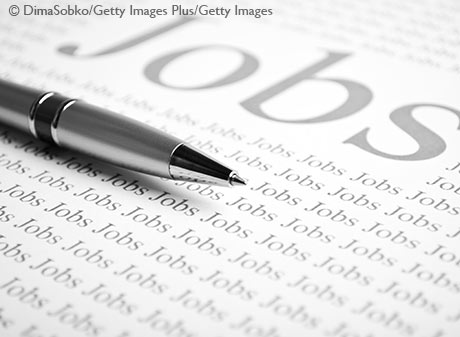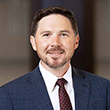COVID-19 and Unemployment Risk: State and MSA Differences

Last week, we published a blog post estimating how many workers were at high risk of unemployment in the face of the current crisis, based on the characteristics of their occupation at the national level.We defined occupations as “low risk” if they were essential to public health or safety, could easily be completed off-site or were likely to be salaried. “High-risk” occupations were any occupations which did not fulfill any of these criteria. We found that 46% of workers were employed in such “high-risk” occupations nationwide. An alternative method is applied by our St. Louis Fed colleagues in a recent blog post. This led to many inquiries about differences across the nation, so this follow-up post will apply the previous analysis to states and metropolitan statistical areas (MSAs). We limited our analysis to the 100 largest MSAs measured by total employment.
In fact, differences among states and localities result in this fraction of those at high risk of unemployment varying substantially from place to place. For our analysis, we continued to use the Bureau of Labor Statistics Occupational Employment Statistics (OES) for 2018, using their 808 detailed occupation codes to categorize workers as at either a high risk or a low risk of unemployment. When OES data do not report employment for a given occupation in a given area, we estimated these missing values by using multiplying a national-occupation-to-total-employment ratio by total employment in the area. We then summed all occupations to produce a revised total employment. As a result, our estimates may be biased towards the national average or underestimate regional differences. In addition to the tables below, the spreadsheet at the link below provides statistics for every state and metro area used in our analysis.
Employment Risk by Location (For Download)
(After this analysis was published, the authors updated the spreadsheet to include the nation's largest 150 metro areas. The analysis remains the same.)
| State Differences in Unemployment Risk | ||||||
|---|---|---|---|---|---|---|
| State | Total Employment | % Low Risk Employment | % High Risk Employment | |||
| Total | Essential | WFH, Not Essential | Salaried, Not Essential or WFH | |||
| Maine | 3,560,262 | 59.6 | 17.8 | 36.3 | 5.5 | 40.4 |
| Maryland | 2,667,115 | 59.0 | 18.7 | 34.1 | 6.1 | 41.0 |
| New York | 9,398,800 | 58.1 | 18.3 | 33.8 | 6.0 | 41.9 |
| New Jersey | 4,036,231 | 57.7 | 18.7 | 32.1 | 6.9 | 42.3 |
| Delaware | 431,715 | 57.1 | 19.0 | 32.9 | 5.3 | 42.9 |
| South Carolina | 2,059,148 | 48.5 | 16.8 | 26.5 | 5.2 | 51.5 |
| North Dakota | 410,965 | 48.0 | 16.5 | 26.6 | 5.0 | 52.0 |
| Indiana | 3,039,668 | 47.2 | 16.6 | 26.0 | 4.6 | 52.8 |
| Wyoming | 265,593 | 45.2 | 15.9 | 23.4 | 5.9 | 54.8 |
| Nevada | 1,342,260 | 44.0 | 14.4 | 24.7 | 4.9 | 56.0 |
| SOURCES: Bureau of Labor Statistics Occupational Employment Statistics (2018) and authors’ calculations. | ||||||
The table above shows the five states with the highest and lowest shares of employment in “high-risk” occupations.While not shown, non-state DC has a much lower fraction of high-risk workers (only 25.6%) than Massachusetts. This is driven by a uniquely high fraction of workers who can work remotely (56.4%, even excluding “essential” workers like legislators). It is immediately clear that all states have a considerable share of workers we consider “high risk.” Even Massachusetts—which boasts the lowest share—has slightly over 40% of total employment in “high-risk” occupations.
Nonetheless, there are clear differences across states. Nevada has the highest share of “high-risk” workers (56%), which we find later is partially (but not entirely) driven by Las Vegas’s unique economic composition.
| MSA Differences in Unemployment Risk | ||||||
|---|---|---|---|---|---|---|
| MSA | Total Employment | % Low Risk Employment | % High Risk Employment | |||
| Total | Essential | WFH, Not Essential | Salaried, Not Essential or WFH | |||
| Durham-Chapel Hill, NC | 296,602 | 65.8 | 20.9 | 40.4 | 4.6 | 34.2 |
| Washington-Arlington-Alexandria, DC-VA-MD-WV | 3,135,115 | 64.1 | 15.8 | 42.5 | 5.8 | 35.9 |
| San Jose-Sunnyvale-Santa Clara, CA | 1,099,500 | 63.5 | 12.8 | 45.7 | 4.9 | 36.5 |
| Boston-Cambridge-Nashua, MA-NH | 2,739,725 | 61.5 | 17.5 | 38.6 | 5.5 | 38.5 |
| Baltimore-Columbia-Towson, MD | 1,350,365 | 60.0 | 19.6 | 34.5 | 6.0 | 40.0 |
| Stockton-Lodi, CA | 236,642 | 47.3 | 19.8 | 21.7 | 5.7 | 52.7 |
| Cape Coral-Fort Myers, FL | 257,433 | 47.2 | 17.3 | 24.5 | 5.4 | 52.8 |
| Grand Rapids-Wyoming, MI | 559,612 | 46.8 | 16.2 | 26.0 | 4.6 | 53.2 |
| Riverside-San Bernardino-Ontario, CA | 1,490,237 | 46.4 | 17.4 | 23.1 | 5.8 | 53.6 |
| Las Vegas-Henderson-Paradise, NV | 980,494 | 43.5 | 14.4 | 24.1 | 5.0 | 56.5 |
| SOURCES: Bureau of Labor Statistics Occupational Employment Statistics (2018) and authors’ calculations. | ||||||
The table above reports the top and bottom five MSAs among the nation’s largest metro areas.Our analysis here finds a similar share of remote-capable jobs for select MSAs as a recent University of Chicago paper that relied upon a different methodology: Dingel, Jonathan; and Neiman, Brent. “How Many Jobs Can Be Done at Home?” Becker Friedman Institute White Paper, March 26, 2020. We once again see significant variability between areas: Las Vegas at 56.5% to Durham-Chapel Hill, N.C. at 34.2%.
Interestingly, we also see a general tendency for MSAs to have a smaller share of “high-risk” jobs than state averages. This is consistent with OES nonmetropolitan area data (not reported here) that allows us to see that workers in non-metropolitan areas are indeed employed more in the “high-risk” occupations, predominantly production occupations and food service.We also find that the size of an MSA is negatively correlated with the fraction of its workforce in high-risk occupations. It appears to generally be the case that the denser an area’s population, the more likely its workers have low-risk jobs.
Conclusion
Our analysis indicates that there are differences among states and MSAs regarding the share of workers facing a high risk of unemployment in the face of COVID-19. However, it is also important to consider the more detailed composition of these jobs, as aggregate statistics mask important features.
For example, Nevada and Indiana both have a large fraction of “high-risk” workers, but those workers are in very different occupations—tending towards tourism in Nevada and production in Indiana—that may have very different immediate responses to the COVID-19 outbreak.
Notes and References
1 We defined occupations as “low risk” if they were essential to public health or safety, could easily be completed off-site or were likely to be salaried. “High-risk” occupations were any occupations which did not fulfill any of these criteria. We found that 46% of workers were employed in such “high-risk” occupations nationwide. An alternative method is applied by our St. Louis Fed colleagues in a recent blog post.
2 We limited our analysis to the 100 largest MSAs measured by total employment.
3 When OES data do not report employment for a given occupation in a given area, we estimated these missing values by using multiplying a national-occupation-to-total-employment ratio by total employment in the area. We then summed all occupations to produce a revised total employment. As a result, our estimates may be biased towards the national average or underestimate regional differences.
4 While not shown, non-state DC has a much lower fraction of high-risk workers (only 25.6%) than Massachusetts. This is driven by a uniquely high fraction of workers who can work remotely (56.4%, even excluding “essential” workers like legislators).
5 Our analysis here finds a similar share of remote-capable jobs for select MSAs as a recent University of Chicago paper that relied upon a different methodology: Dingel, Jonathan; and Neiman, Brent. “How Many Jobs Can Be Done at Home?” Becker Friedman Institute White Paper, March 26, 2020.
6 We also find that the size of an MSA is negatively correlated with the fraction of its workforce in high-risk occupations. It appears to generally be the case that the denser an area’s population, the more likely its workers have low-risk jobs.
Additional Resources
Citation
Charles S. Gascon and Devin Werner, ldquoCOVID-19 and Unemployment Risk: State and MSA Differences,rdquo St. Louis Fed On the Economy, April 3, 2020.
This blog offers commentary, analysis and data from our economists and experts. Views expressed are not necessarily those of the St. Louis Fed or Federal Reserve System.
Email Us
All other blog-related questions



